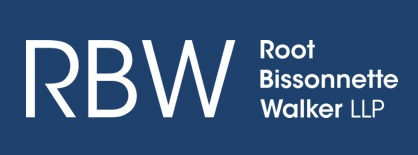The COVID-19 pandemic has put the entire world in a situation that very few of us have experienced before. Under these circumstances, our first concern is for the health and well-being of you and your loved ones.
No matter what the situation, the advisor’s role is to be there for their clients and to continue to support them in every decision to do with their investments and their financial security. This month’s Actualis has been prepared with that in mind. Two issues are considered: what to do now, and what to expect from the future. Obviously, no one has a crystal ball, but lessons from the past may serve us well today.
During this time when only virtual communications are possible, one fact remains: we are available, as usual, to answer any questions and to provide advice. In recent weeks, the various levels of government and the major Canadian financial institutions have mobilized to lighten the financial burden brought by the arrival of COVID-19. If you would like to learn about the measures that can help you, please consult this section.
Until we can meet in person again – which will definitely happen some day – we wish you and your loved ones all the best. Keep well and stay strong!
Lance Wiebe, CFP
Life and Health Insurance Advisor
Mutual Fund Representative
905-401-2842
lance.wiebe@dfsin.ca
Have there been other financial crises linked to pandemics?
The episode that most closely resembles the current pandemic would be the Spanish flu outbreak at the end of World War I. However, since there is little economic data available and it is difficult to separate the effects of the flu from the effects of the war, it would be hard to quantify the economic impact of the Spanish flu.
The COVID-19 pandemic is the sixth one since then. Some economists think that it could cause the global economy to contract by as much as 5% in the 2020 calendar year, and substantially more than that in the early quarters. However, it should be noted that, at this stage, analysts’ forecasts cover a broad spectrum, with some being moderately pessimistic and others considerably more so.
How bad can a recession get?
The deepest recession since World War II occurred from 2007 to 2009, when economic activity dropped by approximately 5%. In the twentieth century as a whole, the worst recession was from 1929-1933, when the decline was about 27%.
What is the difference between a recession and a bear market?
A recession is a slowdown in economic activity defined as two quarters of negative growth. A bear market refers more specifically to stock market behaviour, and occurs when the indices are down at least 20% from their last peak. Taking the Dow Jones Industrial Average as a reference, the stock market officially entered a bear market on March 11, 2020. And given the rapid shutdown of almost all economic activity, experts believe that we are already in a recession as well.
How long does a recession last?
The average duration for the recessions that have occurred since 1900 is about 11 months. The recession of 2008-2009 was the longest of the past 50 years, lasting for 18 months. The good news? Economic expansion phases have an average duration of 48 months.
How long does a bear market last?
Going by U.S. data, there have been eight bear markets since 1926, lasting from six months to almost three years. To find out more about the behaviour of bear markets, read this article.
What about interest rates and inflation?
Interest rates tend to decline during recessions because central banks use them as a tool to stimulate the economy. However, since interest rates are already very low, we could end up facing negative interest rates, which might have the opposite effect and lead to economic stagnation – a situation that several European countries found themselves in following the financial crisis of 2008. Moreover, economists are still weighing the effects of the massive government financial measures on the U.S. debt and on household consumption. The impact on interest rates and inflation has yet to be determined.
What happens to employment in the wake of a recession?
As you might expect, the unemployment rate is one of the factors most closely linked to a recession. In 2007, Canada’s unemployment rate hovered around 6.0%. By the time the 2008-2009 recession ended, it was close to 9%. Not until 2017 did it return to 6.0% or lower. Before the current recession, the unemployment rate was 5.6%.
What’s next: the stock market tends to lead the economy
Finally, it is interesting to note that the stock market often tends to act like a “leading” indicator, i.e., it moves ahead of economic developments. This might be due to the fact that investors are anticipating future corporate revenues. A bear market would thus tend to signal a recession (as seems to have been the case here), and a bull market to signal an economic recovery.
If this trend holds true, then good news for the economy in coming months could be a sustained rally in stock prices.
The following sources were used to prepare this article:
Acorns, “What Is A Recession? (And How Long Does One Last?)” ; “How Long Do Downturns Last?”.
A wealth of common sense, “Recessions vs. Bear Markets”.
Financial Times, “Can the world afford fiscal and monetary stimulus on this scale?”.
Forbes, “How Stocks Reacted During Past Flu Pandemics And Steps You Can Take To Minimize Losses”.
Investopedia, “A Brief History of U.S. Bear Markets” ; “What Happens to Interest Rates During a Recession?”.
The Guardian, “Economists told us what a pandemic could do. Who listened?”.
Trading Economics, “Canada Unemployment Rate”.
U.S. Bureau of Labor Statistics, “The Recession of 2007–2009”.
WT Wealth Management, “Leading Indicators”.
 Back to myNiagaraOnline
Back to myNiagaraOnline






















